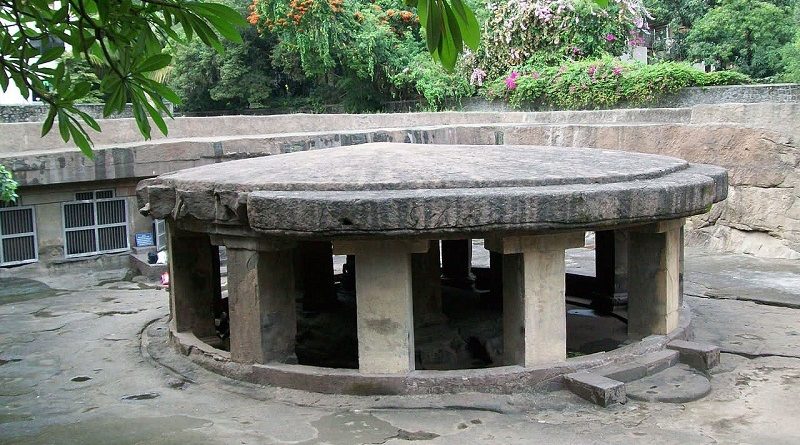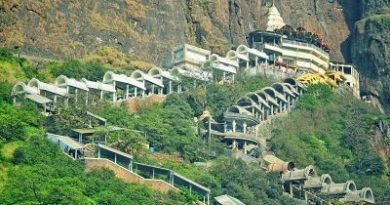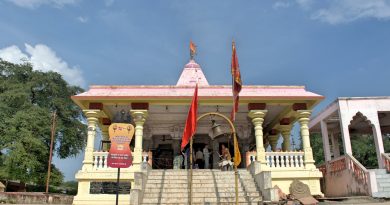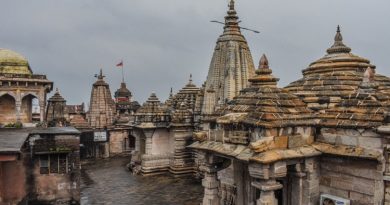Pataleshwar Cave Temple
The Pataleshwar Cave Temple (also called Panchaleshvara or Bamburde) is a rock-cut cave temple, carved out in the 8th century in the Rashtrakuta period. It is located in what is now Pune, in the state of Maharashtra, India. It was originally situated outside the town, but the city limits have expanded so that it is now located on the downtown Jangli Maharaj Road. It has been declared as a protected monument by the government.
The temple, made of basalt rock, is dedicated to the Hindu god Shiva. The sanctum – a cube-shaped room about 3–4 metres on each side – houses a linga – the symbol of Shiva and there are two smaller cells on each side. In front of the cave is a circular Nandi mandapa, its umbrella shaped canopy supported by massive square pillars. This mandapa is one of the peculiar structures of Pataleshwar.
The temple was left incomplete, possibly because of a fault line found at the back of the sanctum sanctorum, which made the further sculpting unsafe, or political upheaval resulting in loss of patronage. Still in use, the linga is anointed with ghee and yogurt. A brass temple bell hangs outside the basalt entryway.
Location of Pataleshwar Cave :
Pataleshwar is the rock cut cave temples, which are located in the heart of the city of Pune in Maharashtra India. This heritage site flows across the river situated in the Shivaji nagar in Jungli Maharaj Road.
History :
Pataleshwar cave temple was carved out in the 8th century. The Pataleshwar cave temple was dedicated to the Lord Pataleshwar (God of Underworld). The most striking feature are cave temple is the unique sound of the bells.
Architecture :
Pataleshwar cave temple provides the perfect example rock cut architecture. It has been hewn out from the single rock. The architecture and designs of the temple cave are quite similar to that of the Elephanta caves. The main attraction of the cave are the shrine of the Lord Shiva and Nandi bull. The entire temple is the treasure house of the gigantic pillars. The temple also has the seating arrangements for the tourists along with the small rooms. Most of the rocks in the cave dates back to the 700 -800 AD. You may few ornate carvings on the black rock, which are simply amazing. The cave temple also houses the museum, which is listed in the Guinness Book of Records. The main attraction of the museum is the grain of rice, that has around 5,000 characters inscribed on it.
Best time to visit :
Pune enjoys the pleasant and equable climate through out the year. But the summers can be little harsh so the best time to visit the cave lies between the month of October to March. The cave remains open to the tourists from the morning 8 am to the evening 5 : 30 pm. Sightseeing around Pataleshwar temple : On the excursion trip from the Pataleshwar cave you can make a visit to the Jangali Maharajah temple dedicated to the Hindu ascetic, who died here in 1818.




